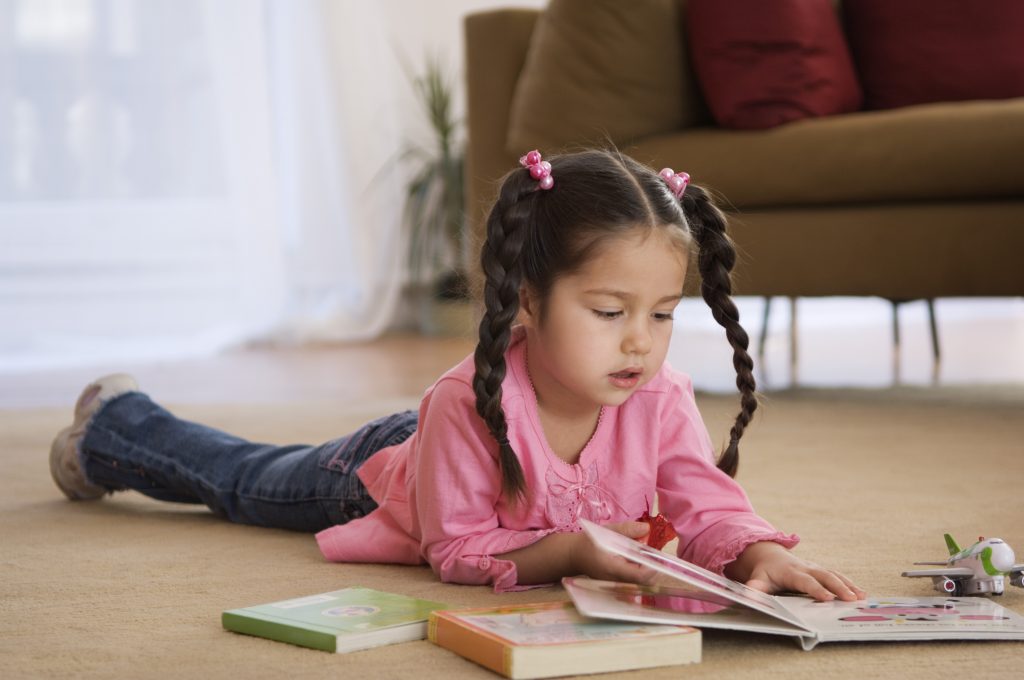Homeschooling is as varied as a bag of jelly-beans! There are as many different homeschool styles as there are families who do it. In other words, there is no ONE right way. However, typically homeschool families fall into one of seven homeschool styles, each with their own unique flavor and tang.
Homeschool style? What’s that?!
Full transparency: when I first started homeschooling, I had no idea I even had a homeschool style. I’m sure I looked like a deer in the head-lights the first time I joined a co-op and folks asked, “so, what’s your homeschool style?” As we started homeschooling, I just sort of picked a style to begin with, gave it a shot, and it morphed from there. Now, seven years down the road, our homeschool style has evolved a bit each year. More on our story later!
For now, if you’re not sure of your homeschool style,, start by reading about the seven homeschool styles and see which one jives with you and your kids. We’ll outline each method and how you can know if it might be the right fit for you and your family. Just see what resonates with you as you read.
What are the different styles of homeschooling?
- Traditional
- Classical
- Charlotte Mason
- Montessori
- Unit Studies
- Unschooling
- Eclectic

Homeschool Style #1: Traditional
This homeschool style is also called “school at home”. It’s exactly what it sounds like! It is where a parent chooses to follow the state’s educational guidelines or even the same curricula that the local school may be using. They simply adapt it to teaching at home!
Alternately, some school-at-home families adopt a homeschool curricula to use but do so following the traditional formula, making homeschool look as much like public school as possible. In this type of approach, children typically study all the same subjects as their public school peers and follow more-or-less the same school calendar and school day hours as traditional students.
Parents who want to try out homeschool with the intention of returning students to public school the following year may adopt this method because it keeps a student in sync with public schoolmates.
Parents who are unsure of what to teach may find comfort in this method because the material is prescribed and the method is familiar to both the parent and the students. This means you can be certain your child is learning everything needed for success without having to make major changes.
This may be your style if you value:
- Traditional school calendar and school hours
- Prefer to follow the public school curriculum
- Temporary homeschooling – Plan to return your students to public school
- Just want to “try out” homeschool to see how it feels
- Feel unsure of what to teach or how
READ: Homeschool Resources Free
Homeschool Style #2: Classical
The Classical approach to homeschooling extends back to the Greek and Roman styles of learning made popular by Aristotle and Socrates. It is a time-tested, proven method of training students through deep reading, intelligent dialogue, and abstract thinking.
The classical method prizes the Great Books, or Living Books, such as classic literature. Much time is devoted to reading these wonderful books and discussing them, joining in the ongoing dialogue of humanity.
All learning is placed into the context of history. Language instruction is highly prized as well as critical thinking, logic, and memorization. Most children learn Latin or Greek in elementary school, adding additional modern languages as they grow older.
The model is built on the classical Applied Trivium which targets memorizing facts and data in elementary school, grappling with critical thinking and logic in middle school, then moving on to rhetoric and expression in high school years.
It is a rigorous but enjoyable, very popular time-honored schooling method! Many homeschool curricula are available to support classical education and there are even co-ops specifically designed to support this homeschool style.
This may be your style if you value:
- Classical literature
- Classical languages
- Focus on history
- Tried-and-true methods
- Love to read (and have kids who love to read)
- Enjoy logic
- Value memorization
- Many classical curriculum choices available
READ: Workboxes – My #1 Homeschool Hack

Homeschool Style #3: Charlotte Mason
This method of homeschooling is built around the ideas of educational pioneer Charlotte Mason that she developed in the 19th century. This popular style of homeschooling puts the focus on child-led learning where children are encouraged to observe and delight in the natural world around them.
This approach also treasures the Living Books and classics but highly values nature, art, and beauty as well. Students will spend a lot of time reading the great classical literature, but also going on nature walks to observe science first hand, journaling about birds, memorizing poems, doing watercolor art, and copying texts from master writers (or art from master artists) in order to learn their style.
Most Charlotte Mason materials are also inherently Christian and will incorporate biblical teaching and text into the materials. The Charlotte Mason approach prizes creativity, time-honored classics, and God’s beauty in the natural world.
It is a happy, inquisitive, hands-on way for children to learn! As a popular homeschool style, there are many curricula available consistent with the Charlotte Mason style.
This may be your style if you value:
- Beauty in nature
- Art & creativity
- Classical literature & Living Books
- Learning from the natural world
- Poetry
- Christian worldview
- Child-led learning
- Many Charlotte Mason curriculum materials to choose from
READ: 100 Must-Read Classic Books for Kids – The Complete Elementary Reading List
Homeschool Style #4: Montessori
The Montessori model of schooling was developed in the early 20th century. Originally, this hands-on, learning-by-playing method was developed to work with special needs students but was adapted later for all learners.
In this student-led model, the home becomes the learning playground. Students have large chunks of time in which to explore. The method is heavily tactile meaning students explore the world interactively, allowing gifted children to learn and progress quickly while students with challenges have multiple opportunities to practice and learn at a more leisurely pace.
There is a focus on art, creativity, and open-ended exploration. The child directs his own learning and there is a high level of respect for the child, nourishing a child’s natural curiosity and desire to learn.
There are very specific Montessori practices, so this approach requires the parent to truly embrace the method and gain appropriate training. Additionally, the Montessori style is only for elementary students, so parents of older students will need to transition to a different model.
This may be your style if you value:
- Interactive, hands-on learning
- Student led exploration
- Specific training for parents
- Specialized materials for students
- Creativity
- Strict adherence to proven methods

Homeschool Style #5: Unit Studies
The unit study method of homeschooling involves teaching using themes, often a science or history theme, that will pique a child’s interests. All subjects overlap content to support that theme, which may last for 3 weeks or 3 months. It is not always possible to integrate ALL subjects, especially math, but many other subjects can flow together.
For example, a child studying about the Revolutionary period in American history may read historical texts and biographies from that time, memorize the preamble to the constitution, read a historical fiction book about George Washington, write essays concerning topics relevant to colonization, take spelling words from the literature being studied, learn cursive in the style of the founding fathers, copy Benjamin Franklin’s rules for living, and study in science things like glass blowing and inventions without electricity.
Because everything is so interrelated, it is a highly engaging, memorable, and fun way to learn! Kids who are resistant to learning often get very involved and excited about this way of learning. It is often a fun and fascinating, curiosity-led type of deep-dive exploration.
Children typically grasp vocabulary quickly because they see it over and over in multiple contexts. History, reading, writing, spelling, grammar, science and sometimes art are so interwoven that students gain additional practice without even realizing it. Many Christian families also weave correlated Bible instruction into the unit studies as well.
This may be your style if you value:
- Integrated, thematic instruction
- The big picture (connecting many pieces together)
- Interest led learning
- Going deep into specific themes
- Enjoy deep diving into history or science topics
- Integration of many materials that interact and support one another
READ: Why I Homeschool My Kids
Homeschool Style #6: Unschooling
The Unschooling homeschool style gained its name because it is as different from public schooling as could possibly be! The argument could be made that it isn’t a method at all! Rather, unschooling represents a free-form, interest-led, experiential learning that is completely unique to each student.
In this approach to homeschooling, parents allow the child’s interests to drive instruction. While some formalized teaching will occur to teach basics such as reading, writing, and math, all other subjects are generally taught in the context of allowing the child to pursue his passion until he tires of it.
This is generally done through hands-on experiences, fieldtrips, investigation, trips to the library, and individualized activity-based learning in which the world is the classroom.
This learn-on-the-go approach goes against convention but works well for families who don’t care to follow a formal curricula or plan. It also allows a child to learn off-the-beaten path knowledge that may be useful for future entrepreneurial opportunities or trades, because it plays into a child’s natural curiosity and self-motivation to learn.
This may be your style if you value:
- Casual teaching and learning
- Individualized, interest-led learning
- No curriculum
- Learn-on-the-go, travel, fieldtrips
- Spontaneity
Homeschool Style #7: Eclectic
Eclectic homeschooling is probably the most popular homeschooling method because it is simply a smorgasbord of all the other approaches.
Most families find that different children respond to different methods and so adopt a little of this and a little of that in their homeschool approach. This style treats the other methods mentioned as options.
Hence a family may choose a classical Language Arts curriculum while using unit studies to combine history, Bible, and science instruction. The same parent may employ some Charlotte Mason strategies to hone their child’s love of nature and art or use the Montessori approach for math instruction.
In this way, there are thousands of variations of homeschooling that can all fall under the umbrella of eclectic instruction. You commonly see an eclectic method among families of multiple children and homeschool moms who have been at it a long time. These homeschooling veterans feel comfortable to cater instruction to best fit the needs of each of their students. They’ve generally tried it all over the years!
This may be your style if you value:
- Meeting the needs of several different children
- Choice
- No strict adherence to any one style
- Change as needed
- Freedom to modify
- Enjoy building your own with a little of this and that

What are the most popular homeschooling methods?
These seven homeschool styles (traditional, classical, Charlotte Mason, Montessori, unit studies, unschooling, and eclectic) represent the most popular homeschooling methods today, but there are many variations and combinations of each. In the world of homeschooling, you will find strict advocates of some of the styles, especially those who endorse classical learning, Montessori, or Charlotte Mason. However, most families choose an eclectic approach combining the best features of all the different homeschool styles. It is worth mentioning also the increasing popularity of online homeschooling, which may or may not fall into these same seven methodologies.
So, which appeals the most to you? What’s YOUR homeschool style?
When I first started out as a homeschool mom, I had just left he public school classroom as a teacher. You can read about why I made that decision, but being a classroom teacher significantly impacted my homeschool style. I was a huge fan of the unit studies method, but I also loved aspects of the traditional school model. You know – the smell of fresh pencils every August and the rhythm of a typical school year. As an early childhood educator, I was also pretty familiar with the Montessori method, but not convinced I I wanted to do it at home. So, while I leaned into unit studies initially, I soon discovered some pieces of classical homeschooling and Charlotte Mason that were a good fit for my crew. Within a year or two, I had chunked some of the formal curricula in favor of creating my own – a beautiful hodge-podge of what works for US. We became less traditional and much more eclectic. I’ve never yet given unschooling a whirl, but who knows? Maybe we will!
What about you? What’s your homeschool style?
Up Next: New to Homeschooling? Join the step-by-step 30-day course, “Heading into Homeschool”



Pingback: 7 Free Online Homeschool Sites – Lessons, Unit Studies, & More!
Pingback: Where to Find FREE Homeschool Curriculum Online - Maestra Mom